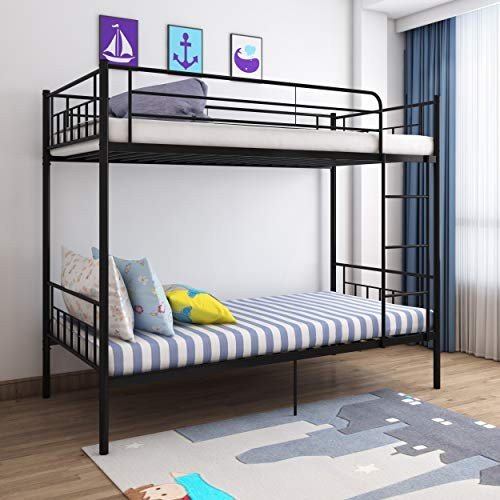Exploring Bunk Beds: A Comprehensive Guide
Bunk beds have actually long been a staple in kids's bed rooms, dorm rooms, and even homes with limited space. Not just do they supply a useful sleeping solution, however they also develop a fun and creative environment for children and a great space-saver for adults and households. This article will check out everything you need to understand about bunk beds, from types and products to safety tips and buying advice.
Table of Contents
- Types of Bunk Beds
- Standard Bunk Beds
- Loft Beds
- Triple Bunk Beds
- L-Shaped Bunk Beds
- Product Options
- Wood
- Metal
- Safety Considerations
- Buying Guide
- Frequently asked questions
Types of Bunk Beds
Bunk beds are available in numerous styles to suit various needs and preferences. Here's a breakdown of the most typical types:
Conventional Bunk Beds
Conventional bunks typically include two beds stacked vertically on top of one another. These beds are ideal for siblings sharing a space or for taking full advantage of sleeping space in guest rooms.
Loft Beds
Loft beds stand similarly to conventional bunk beds however do not have a lower sleeping location. Rather, they often integrate a desk or seating area below, making them a great choice for little spaces requiring multifunctionality.
Triple Bunk Beds
Triple bunk beds are created for 3 residents, with beds stacked in a three-tier setup. These are less typical however can be a fun option for large households or pajama parties.
L-Shaped Bunk Beds
With one bed placed horizontally and the other vertically, L-shaped bunk beds are frequently geared up with extra functions such as desks or storage drawers and can complement corner spaces in a space.
Contrast of Bunk Bed Types
| Bed Type | Perfect Use | Description |
|---|---|---|
| Standard | Shared bedrooms or visitor rooms | Two beds stacked vertically |
| Loft | Small spaces needing multi-purpose space | Upper bed with open space beneath |
| Triple | Big households or slumber parties | 3 beds stacked vertically |
| L-Shaped | Corner or versatile spaces | A combination of vertical and horizontal beds |
Product Options
Bunk beds are produced from different products, with wood and metal being the most common. Each product has its advantages and disadvantages.
Wood
- Resilience: Generally robust and can endure years of usage.
- Visual Appeal: Offers a classic look that can blend with different decors.
- Weight Capacity: Typically tougher; can support heavier weights.
- Disadvantages: May be more costly than metal alternatives and can be prone to scratches.
Metal
- Toughness: Generally lightweight and simple to move but still tough.
- Modern Design: Often can be found in sleek designs, making it appealing for modern areas.
- Affordable: Usually cheaper than wooden options.
- Disadvantages: Can be cold to the touch in winter seasons and may not have the exact same visual appeal for some purchasers.
Security Considerations
When it comes to bunk beds, safety can not be overlooked. Here are essential safety tips to bear in mind:
- Guardrails: Ensure that the top bunk has guardrails on both sides to avoid falls.
- Strong Construction: Check for a strong develop and tough products to hold up against weight and movement.
- Weight Limit: Adhere to the producer's weight limit for both the upper and lower bunks.
- Ladder Design: Choose bunks with a safe, easy-to-climb ladder and avoid any sharp edges or rungs.
- Age Restrictions: Most producers advise that kids under the age of six need to not oversleep the upper bunk.
Buying Guide
When looking for bunk beds, consider the following factors to find the best suitable for your requirements:
- Space Availability: Measure the space size and ceiling height, guaranteeing there is sufficient space for the top bunk.
- Bed Size: Decide between twin, complete, or bigger sizes based upon your needs and the size of the space.
- Design Preference: Consider the general design of the bed room to discover an appropriate style.
- Relieve of Setup: Look for a bunk bed that is straightforward to put together.
- Budget plan: Bunk beds come in numerous cost varieties, so figure out a budget plan before starting your search.
FAQs
1. What is the advised age for kids to sleep on the top bunk?
Kids aged six and older are typically advised to sleep on the leading bunk to reduce the danger of falls.
2. How can I make my bunk bed more secure?
To enhance safety, guarantee guardrails are effectively installed and examine that the bed is put on a flat surface area. In addition, motivate children to use the ladder carefully.
3. Can I convert a bunk bed into 2 different beds?
Many bunk beds are developed to be convertible. Check the maker's specs for convertibility functions.
4. What accessories are available for bunk beds?
Typical devices include bed linens, storage drawers, staircases rather of ladders, and tented canopies for an enjoyable visual appeal.
5. How do I keep my bunk bed?
Routine checks for loose screws or structural stability can assist guarantee security. Dust namorce.top and clean spills promptly to keep the products in good condition.
Bunk beds are versatile and a space-efficient service for various living circumstances, from children's rooms to visitor accommodations. With many styles and materials readily available, potential buyers have a wealth of options to think about, making sure a combination of functionality and aesthetic appeals. By focusing on safety and following the suggestions laid out in this guide, people can discover the ideal bunk bed that fits their space and way of life, all while developing an enjoyable sleeping environment.

